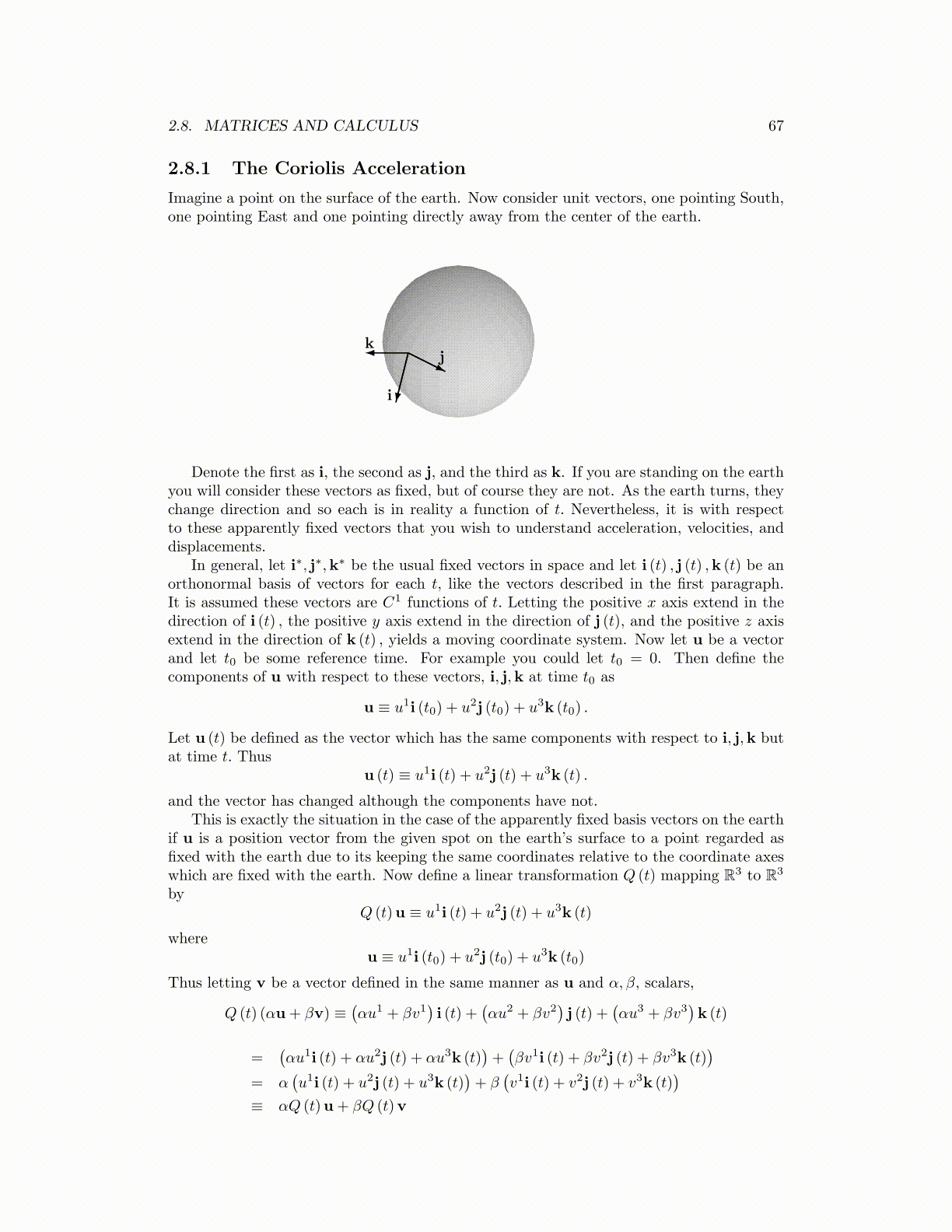
2.8. MATRICES AND CALCULUS 67
2.8.1 The Coriolis Acceleration
Imagine a point on the surface of the earth. Now consider unit vectors, one pointing South,one pointing East and one pointing directly away from the center of the earth.
i
kj
Denote the first as i, the second as j, and the third as k. If you are standing on the earthyou will consider these vectors as fixed, but of course they are not. As the earth turns, theychange direction and so each is in reality a function of t. Nevertheless, it is with respectto these apparently fixed vectors that you wish to understand acceleration, velocities, anddisplacements.
In general, let i∗, j∗,k∗ be the usual fixed vectors in space and let i (t) , j (t) ,k (t) be anorthonormal basis of vectors for each t, like the vectors described in the first paragraph.It is assumed these vectors are C1 functions of t. Letting the positive x axis extend in thedirection of i (t) , the positive y axis extend in the direction of j (t), and the positive z axisextend in the direction of k (t) , yields a moving coordinate system. Now let u be a vectorand let t0 be some reference time. For example you could let t0 = 0. Then define thecomponents of u with respect to these vectors, i, j,k at time t0 as
u ≡ u1i (t0) + u2j (t0) + u3k (t0) .
Let u (t) be defined as the vector which has the same components with respect to i, j,k butat time t. Thus
u (t) ≡ u1i (t) + u2j (t) + u3k (t) .
and the vector has changed although the components have not.This is exactly the situation in the case of the apparently fixed basis vectors on the earth
if u is a position vector from the given spot on the earth’s surface to a point regarded asfixed with the earth due to its keeping the same coordinates relative to the coordinate axeswhich are fixed with the earth. Now define a linear transformation Q (t) mapping R3 to R3
byQ (t)u ≡ u1i (t) + u2j (t) + u3k (t)
whereu ≡ u1i (t0) + u2j (t0) + u3k (t0)
Thus letting v be a vector defined in the same manner as u and α, β, scalars,
Q (t) (αu+ βv) ≡(αu1 + βv1
)i (t) +
(αu2 + βv2
)j (t) +
(αu3 + βv3
)k (t)
=(αu1i (t) + αu2j (t) + αu3k (t)
)+(βv1i (t) + βv2j (t) + βv3k (t)
)= α
(u1i (t) + u2j (t) + u3k (t)
)+ β
(v1i (t) + v2j (t) + v3k (t)
)≡ αQ (t)u+ βQ (t)v